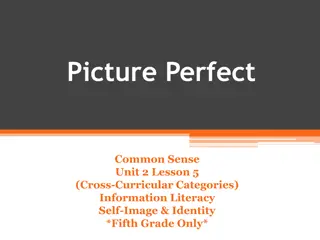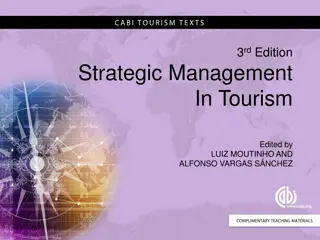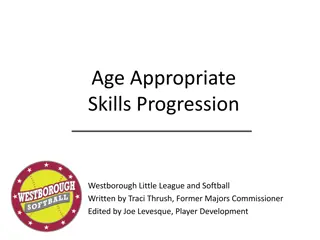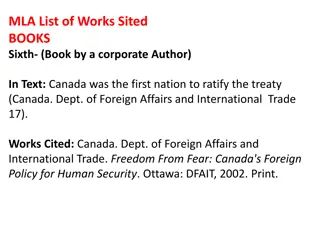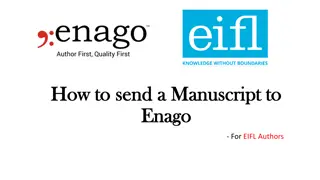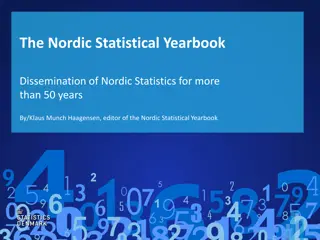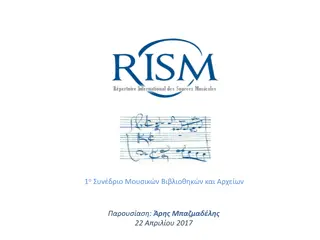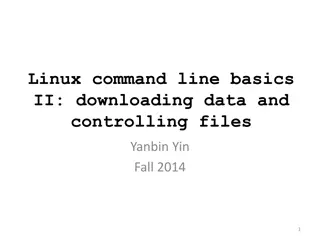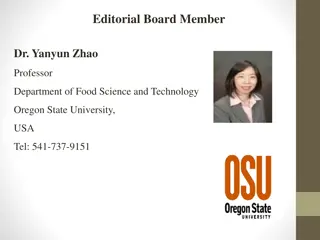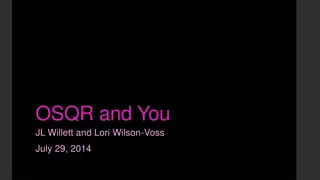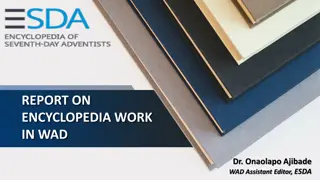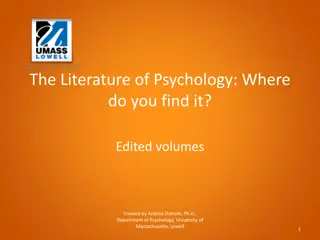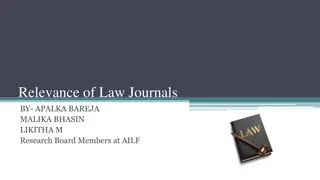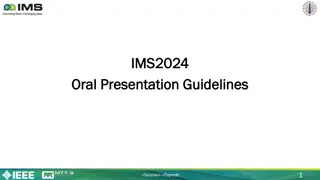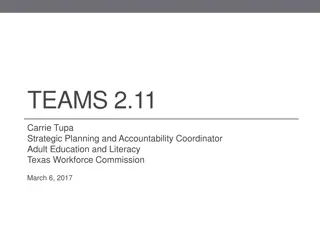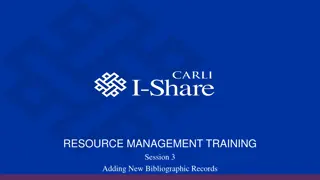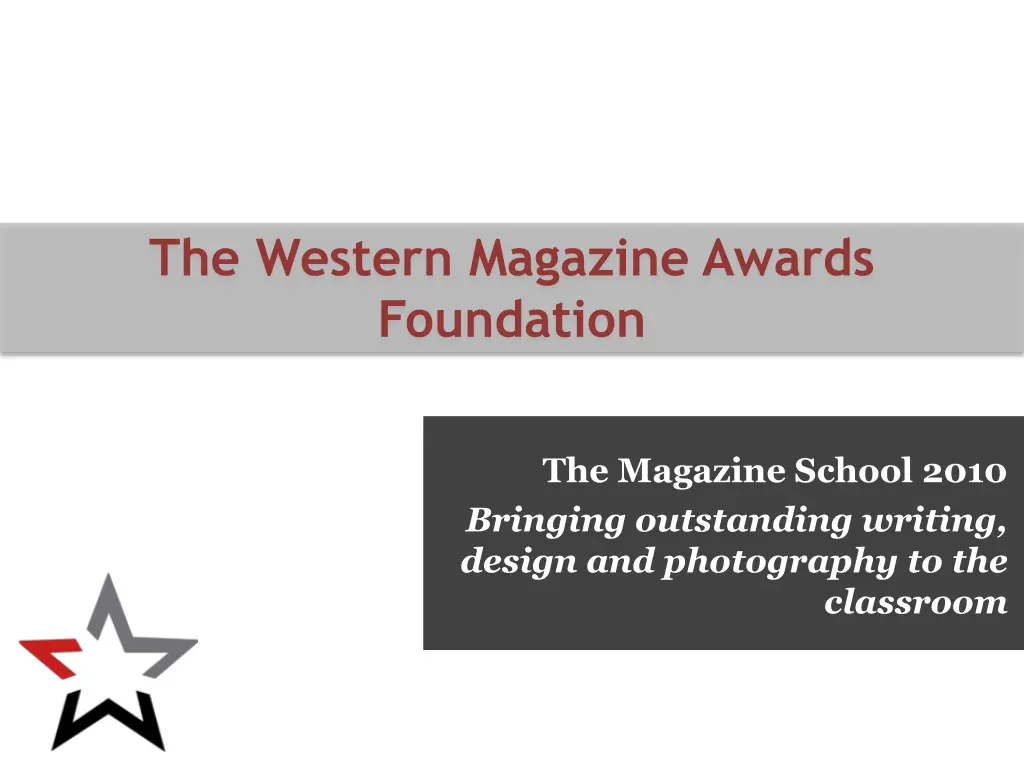
Magazine Awards Foundation - Celebrating Excellence in Western Canadian Editorial Work
Discover the Western Magazine Awards Foundation's commitment to recognizing excellence in Western Canadian editorial work and design through their annual awards program. Learn about The Magazine School project that provides valuable classroom materials to writing and design instructors. Dive into the world of exceptional writing, design, and photography brought to the classroom by the Foundation. Explore the journey of Lindsay Cuff and her award-winning piece, "On Atrocity and Grace: A Contrapuntal Vision," featured in The Malahat Review.
Download Presentation

Please find below an Image/Link to download the presentation.
The content on the website is provided AS IS for your information and personal use only. It may not be sold, licensed, or shared on other websites without obtaining consent from the author. If you encounter any issues during the download, it is possible that the publisher has removed the file from their server.
You are allowed to download the files provided on this website for personal or commercial use, subject to the condition that they are used lawfully. All files are the property of their respective owners.
The content on the website is provided AS IS for your information and personal use only. It may not be sold, licensed, or shared on other websites without obtaining consent from the author.
E N D
Presentation Transcript
The Western Magazine Awards Foundation The Magazine School 2010 Bringing outstanding writing, design and photography to the classroom
Western Magazine Awards Foundation An annual awards program recognizing excellence in Western Canadian editorial work, and design. westernmagazineawards.ca TMS The Magazine School is a project of the Western Magazine Awards Foundation. It provides classroom material to writing and design instructors and professors.
The 2010 Western Magazine Awards Lindsay Cuff On Atrocity and Grace: A Contrapuntal Vision The Malahat Review
Finalists: Human Experience Sponsored by the Canadian Society of Magazine Editors Lindsay Cuff, On Atrocity and Grace: A Contrapuntal Vision, TheMalahat Review Jane Wells, Waking in the Valley of the Shadow, Prairie Fire Laurie Block, God of the Father, Prairie Fire Steve Burgess, Dance Me to the End of Love, Swerve Steve Burgess, Tales from Riverheights Terrace, Swerve
And the winner is Lindsay Cuff On Atrocity and Grace: A Contrapuntal Vision The Malahat Review
Published in The Malahat Review Essential poetry, fiction and creative non-fiction Quarterly literary journal published by the University of Victoria web.uvic.ca/malahat
Meet author Lindsay Cuff Born in the Maritimes Lives and writes in New York City Trained as a violinist and singer
Story intent I wanted to retell my personal experiences with my uncle, and my philosophical musings. Lindsay Cuff
Story development Lindsay Cuff shared the draft of this article with 11 members of her Master s of Fine Arts class at the University of British Columbia. She considered their critiques, but stayed true to herself and her mission for the article.
Peer critiques 1. Some said Lindsay was trying to tackle too much. They wanted her to cut out the New Orleans section, but she said no: The things that I had written about were all important to me. 2. Others said the essay was difficult to follow and could lose readers. Lindsay said, It was important to have this essay presented with its dual layers.
Process (with scissors) To gain some perspective on the essay, she filed it away for a month. When Lindsay returned to the piece, she literally cut up the essay in sections and arranged them like a puzzle. She wanted to make it easy for the reader to read, so she numbered each section. Sometimes it s the simple changes that are the best. Lindsay Cuff
Cuff on trusting herself I don t think about publishing at all when I am writing. When you start writing a piece. It s important for you to listen to yourself before you listen to others. A lot of writers get caught up about where their piece is going to end up, and start writing towards that audience and end up ignoring themselves. Lindsay Cuff
Getting published Lindsay Cuff researched various publications and found that The Malahat Review was the best fit. Lindsay mailed her essay to the Malahat team and within three weeks received an email stating that her piece had been accepted.
Working with Malahat Initial vetting at Malahat is by committee. Lynne Van Luven, associate professor, journalism, was the author s editor. The only major change was that Lindsay s original ending to the piece was removed.
Section 1: Lead Lindsay is seven and with her 12-year-old cousin. They are going to record a song on a tape recorder. My uncle, her dad, pokes his head in the door, but instead of smiling, my cousin narrows her eyes and closes the door.
Section 2: Fugue as metaphor The author uses fugue music as a metaphor for coping with extremes.
Section 3: Criminal Charges Your uncle s going to jail. I didn t even need to ask which uncle. I was 11, but already had a sense of who in our family was capable of atrocity.
Section 4: Admiration for fugue as a musical form At its most fundamental, the fugue consists of two or more voices the form exists in the interplay of the theme between these voices. It is a musical form I regard highly, one I try to imitate but fall short.
Section 5: A chance meeting Here, in a twist of fate, the author s father is a prison chaplain who is sent for training to a New Brunswick prison. There, he sees the uncle. My uncle breaks down and tells my dad that he fell in love with his own daughter. My dad thinks there is nothing worse in the world than what my uncle has done.
Section 6: Juxtaposing atrocity and grace What I want to know is this: how can I remember atrocity while still finding room for grace? How do I move from one and into the other knowing what has happened but allowing room for some sort of compassion, even beauty?
Section 7: Cuff meets her uncle 10 years later Now we eat brunch together and I realize that this is the first time I m sitting across from him as an adult. He gives me a hug and I feel the old apprehensions coming back. He s my uncle. It s been a long time. He s done time.
Section 8: Playing music with her uncle The author is jamming with her uncle s band. I pick up my uncle s guitar and sit on a chair. Do you want something sad or something fast? I feel more vulnerable now. Whichever one you want, sweetheart. I think of all the songs I know, but I don t know which one to sing.
Section 9: Making sense of the abuse What I fear is that if I subscribe to Nietzsche s active forgetting I will live in a world with just one voice all atrocity and no grace. My grandparents, in support of my uncle, blame my cousin. So how do I hold on to remembering without becoming paralyzed with it? Covered under a perpetual cloth of grief?
Section 10: The end The author visits New Orleans five months after Hurricane Katrina. She watches an old man, five feet tall, wearing a black bowler hat and singing in a deep, gravelly voice. She muses about atrocity and grace. If atrocity is the falling then maybe grace is what dances between.
Writing challenges How to end the piece? I wanted to keep explaining, instead of trusting my reader. Lindsay said she learned to let go of their (the reader s) hand at the right moment.
Discussion Did the author s use of fugue music work? What passages or sentences did you find most powerful? Do you agree with her student peer reviews or is the article clear enough for you, the reader? How did the article deal with the definitions of atrocity and grace?
Credits The Magazine School is a project of the Western Magazine Awards Foundation, which acknowledges the financial support of the Government of Canada through the Canada Periodical Fund of the Department of Canadian Heritage toward project costs. The Magazine School content was prepared with the skilful assistance of Janice Paskey and students Farhana Rahman and Terence Yung of Mount Royal University, and with the generous co-operation of the winners of the 2010 Western Magazine Awards. We acknowledge the financial support of the Government of Canada through the Canada Periodical Fund (CPF) of the Department of Canadian Heritage towards our project costs.

